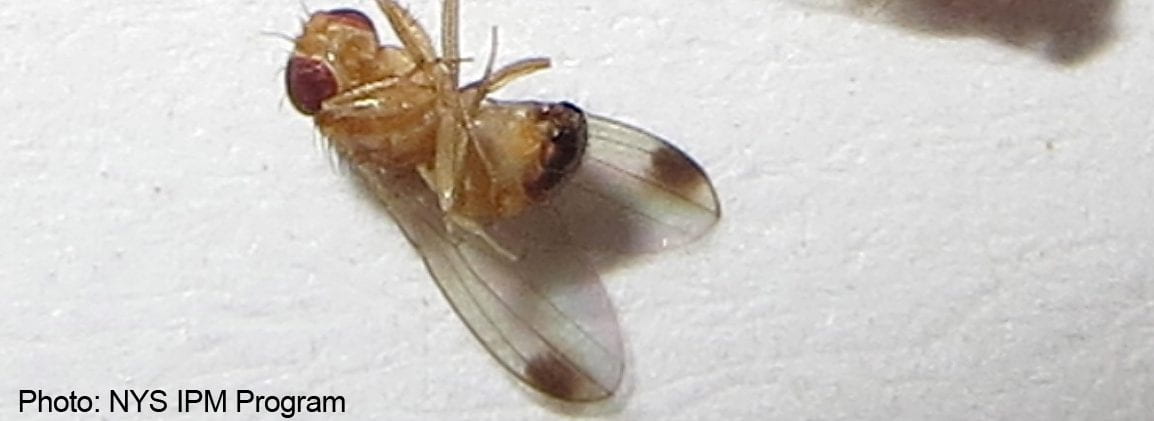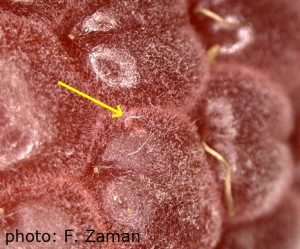In the last week of July 2017, my program found up to 100 SWD in some of the SWD traps in our raspberry research plot in Geneva, NY. Without a doubt, pressure from SWD and fruit infestation levels will be increasing as the SWD population explodes.

In addition, fruit crops normally escaping infestation are reporting problems with SWD. Early blueberry varieties are at high risk and the later varieties will be even more prone to infestation. A tart cherry grower in the Lake Ontario region reports a load of fruit rejected by the processor due to SWD infestation.
When harvest dates are close to insecticide application dates, the available insecticides that can be used against SWD on berries or on tree fruit are few because of the needed days-to-harvest intervals. The heavy rains washing off applied materials creates a greater challenge to keeping fruit clean of infestation.
A mild winter; early arrival of SWD; warm, cloudy, rainy weather; abundant fruit; prolonged ripening windows — these likely have created a perfect storm for SWD in 2017. We continue to learn about this pest, what drives it, and what we can do about it. We thought summer raspberries, early blueberry varieties, tart cherries and sweet cherries weren't at high risk, perhaps we need to rethink this in light of this year's situation and be more vigilant in 2018 for conditions that favor SWD infestation in our early fruit crops.









